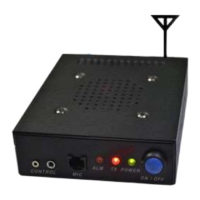BTECH AMPLIFER USER MANUAL | visit us online for support at baofengtech.com
BTECH AMPLIFIER USER MANUAL
【READ FIRST】:
The BTECH Series Amplifiers are available in different frequency bands and frequency modulation modes (D
Series covers both FDMA/TDMA).
Transmitting Out of Band (Example: Transmitting VHF on UHF):
o FDMA Amplifier: Transmitting out of band on the FDMA Amplifiers will pass through the direct HT power through.
Ensure the connected antenna is matched and you can transmit out of band without amplification
o TDMA Amplifier (D Series): Amplifier will not transmit out of band (example: it will not transmit a VHF signal on the
UHF amplifier (vice versa)). Do not transmit out of band on the TDMA (D Series) Amplifier
Transmitting on a different Modulation Mode:
o FDMA Amplifier: The FDMA amplifier will not properly transmit another other modulation mode (such as DMR
which is TDMA)
o TDMA Amplifier (D Series): The TDMA Amplifier is compatible with both FDMA and TDMA signals. It will
automatically transmit the proper signal
Use a Proper External Antenna to the Amplifier
Antenna Basics
Your BTECH Amplifier does not include an Antenna. It is very Important to not transmit without an antenna or dummy load attached to the amplifier. Doing so,
may cause harm to the radio equipment.
You will want to choose a suitable antenna for the bands you plan on transmitting and receiving on.
Example: If you plan on transmitting on 145MHz you will want to ensure you have picked an antenna that states it is capable of working with 145MHz.
If an antenna is not properly tuned for the frequency you transmit on – it can cause damage with the reflected power going back into the radio. Pick an antenna
with SWR of less than 1.5:1 to safely transmit.
Magnetically Mounted Antennas:
These antennas must be grounded to a metal surface, such as a vehicle body. Magnetic base antennas do not properly operate unless they are fully
magnetically grounded first.
【Product Highlights】:
●The BTECH Amplifier series are portable, lightweight, wide coverage RF power amplifiers for Handheld Radio equipment.
●Dual mode Amplifier for both Digital and Analog Radio Automatic recognition of digital and analog systems.
Use the FDMA Amplifier for: Analog, P25 Phase 1, C4FM (System Fusion), NXDN, IDAS, dPMR, MPT1327
Use the D Series TDMA Amplifier for all FDMA Modes Plus DMR and P25 Phase 2
TDMA Amplifier Signified by “D” on Model Number
●High output power up from 20-30 watts (Input: 2-6 watts)
●Small size: This amplifier's size makes it the perfect companion for field operation without the added weight.
●Includes Voltage Spike Suppression, Over Temperature Protection, RF sensing, Automatic Power Control (APC), Harmonic Filters.
●Harmonic Filters: Purifies the input signal and transmits a cleaner signal
●Built-in large speaker and microphone socket.
●Status indicators: Shows on the amplifier the current status.

